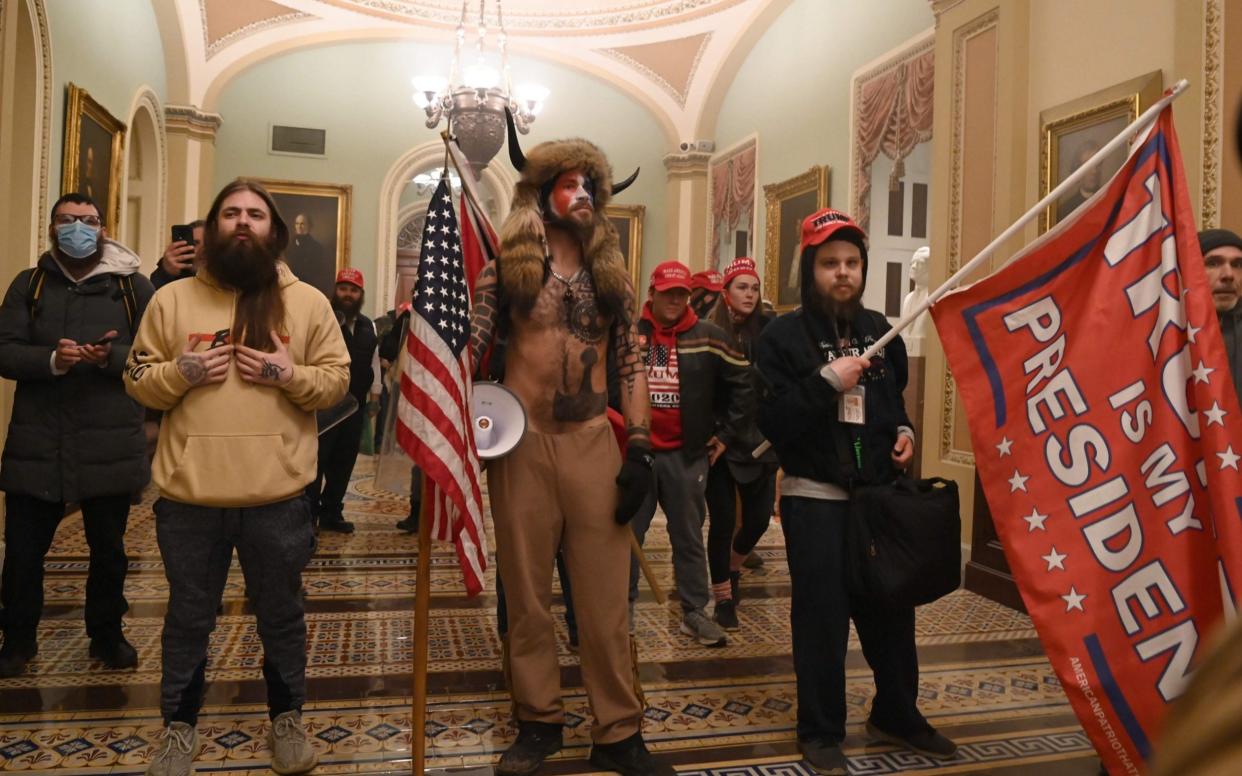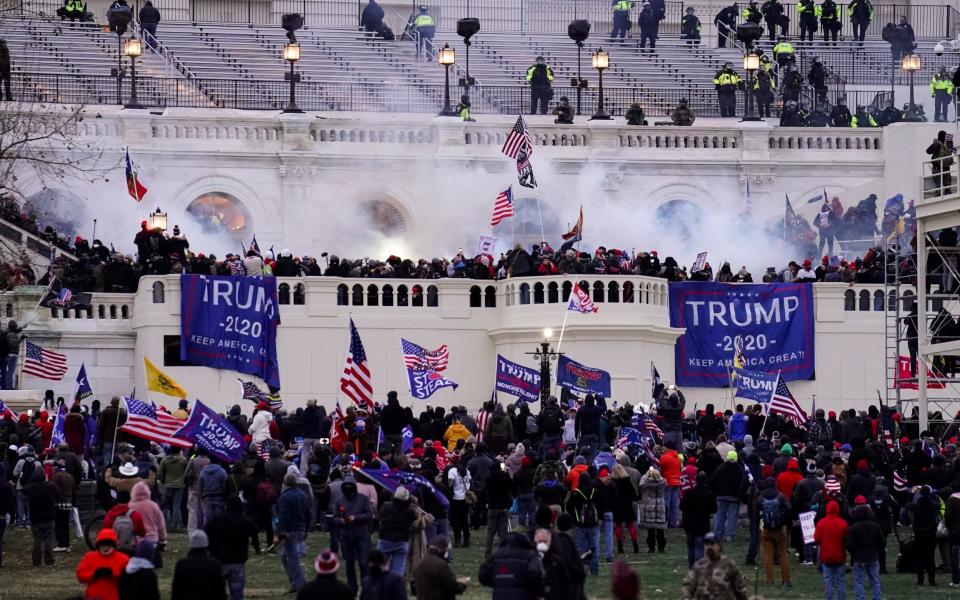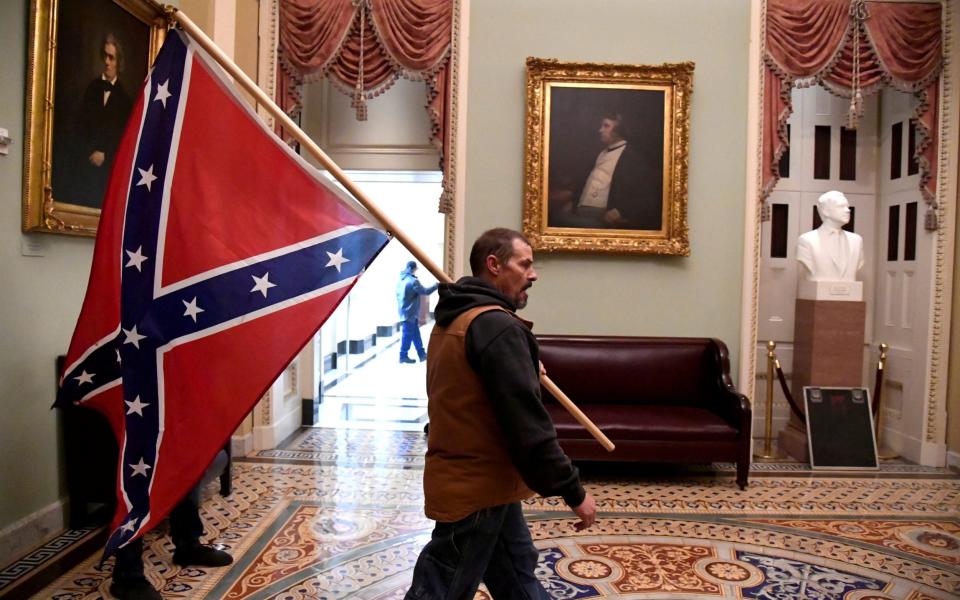US intelligence agencies failed to act on warnings of Capitol riot, says damning senate report

US intelligence agencies were forewarned of plans to storm the Capitol on January 6 but failed to take them seriously, a damning Senate report concluded.
The Capitol Police's intelligence division began gathering information from early December that armed protesters planned to surround Congress on January 6, including online posts stating: “Bring guns. It’s now or never.”
The intelligence failings, "chaotic" communication channels, poor planning and equipment meant police officers were "put in an impossible situation” and unable to properly protect the Capitol, the report's authors said.
The bipartisan report, jointly released on Tuesday by two Senate committees, included testimony detailing how the failures allowed "thousands of well-equipped armed insurrectionists” to violently attack the Capitol and disrupt the certification of Joe Biden's election victory.
The result was an “unprecedented attack” on American democracy which left five people dead - four protesters and one policeman - and around 140 officers injured, the report concluded.

It also tied the attack to the deaths of two other officers, who died by suicide in the aftermath of the incident.
The 127-page report does not examine the cause of the attack, or the impact of Donald Trump's call to his supporters to march to the Capitol and "fight like hell" against what he claimed was a fraudulent election result.
But the months-long investigation does offer the most comprehensive account of the warnings the intelligence services received and their failure to warn senior officials or adequately equip front-line officers.
One of the report's co-authors, Gary Peters, the Democratic chair of the homeland security committee, said: “There were significant, widespread and unacceptable breakdowns in the intelligence gathering … The failure to adequately assess the threat of violence on that day contributed significantly to the breach of the Capitol. The attack was, quite frankly, planned in plain sight.”
Another co-author, Republican senator Rob Portman, said: “Let’s be honest: Capitol Police were put in an impossible situation. Without adequate intelligence, training and equipment, they did not have the tools to protect the Capitol.”
One Capitol Police intelligence report dated December 21 highlighted the blog "thedonald.win" which carried a map of the Capitol campus and noted: “several comments promote confronting members of Congress and carrying firearms during the protest.”

The report highlighted around 30 threats from the website, including: “Get into Capitol Building, stand outside congress", " Anyone going armed needs to be mentally prepared to draw down on LEOs [Law Enforcement Officers]", and "If a million patriots show up bristling with AR’s, just how brave do you think they’ll be when it comes to enforcing their unconstitutional laws? Don’t cuck out. This is do or die. Bring your guns” .
But the intelligence was not passed further up the chain of command.
Despite the intense media coverage about protesters' plans to descend on the US capital, the Capitol police had no department-wide security plan in place for the day.
The police leadership also failed to provide its officers with effective protective equipment or training, and only four out of its seven specialist platoons had appropriate riot gear.
"The many other USCP officers who fought to defend the Capitol were left to do so in their daily uniforms", the report said.
Other law enforcement units were slow to arrive on the scene despite urgent requests for help.
The National Guard did not begin arriving at the Capitol until four hours after the building was breached.
The report also singled out the FBI and the Department of Homeland Security for criticism, noting that neither agency issued a warning to law enforcement about the potential for violence, despite being aware of the threats circulating online.
The Capitol Police agreed that improvements were needed to the way intelligence was analysed and disseminated.
But, it insisted that neither the Capitol Police, nor the FBI, Secret Service, DC Police or other law enforcement partners "knew thousands of rioters were planning to attack the U.S. Capitol. The known intelligence simply didn’t support that conclusion.”

